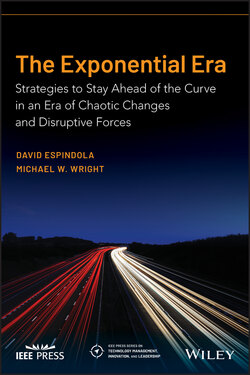Читать книгу The Exponential Era - David Espindola - Страница 26
The Exponential Explosion
ОглавлениеAs we explore fast‐growing technologies that are impacting our future, consider the following exponential curves, their accelerated growth, and consequent cost reductions.
Figure 1.2 Cost per human genome
Source: NIH. National Genome Research Institute. Public Domain. https://www.genome.gov/about‐genomics/fact‐sheets/DNA‐Sequencing‐Costs‐Data
In telecommunications we find the following remarkable advancements:
Fixed broadband speeds will more than double by 2023.
Mobile (cellular) speeds will more than triple by 2023.23
In biotechnology, the costs to sequence a base pair of genes have decreased by half every 18 months for the last decade (Figure 1.2).
Note that there are approximately 1,000 nucleotide pairs of coding sequence per gene. The human genome contains approximately 3 billion of these base pairs. Thirty years ago, a scientist could expect to spend 20 years exploring the sequence of one gene pair. The first whole human genome sequencing cost roughly $2.7 billion in 2003. By 2006, the cost had decreased to $300,000. In 2016, the cost reached a remarkable and generally affordable $1,000 mark and now a Chinese company claims it can sequence the human genome for $100.24
Another remarkable area of exponential growth is the amount of knowledge humans have accumulated in less than a century. If you were born in the late 1940s to early 1960s (aka baby boomer), while you were growing up you wouldn't have seen the beginning of the exponential growth of data accumulation and the expansion of knowledge. But by the time you reached adulthood it was changing rapidly enough for you to notice the inflection point. If you are a young adult today, you are experiencing first‐hand the overwhelming growth and impact of knowledge expansion at an exponential rate. IBM predicts that knowledge will double every 11–12 hours in 2020.25
